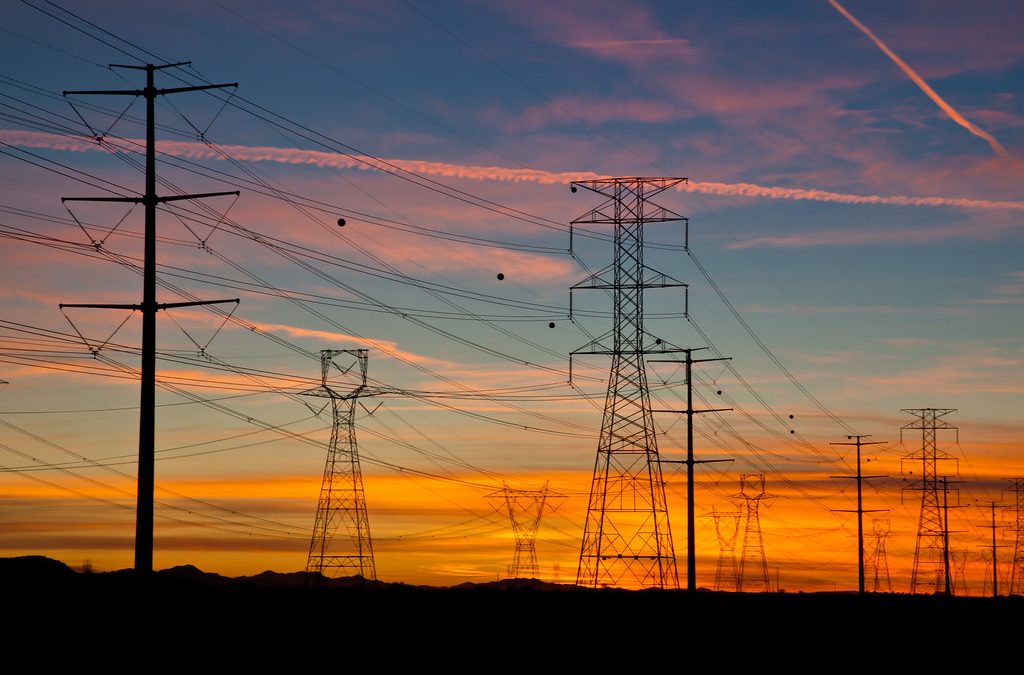Arizona just lived through another blistering stretch of summer, and the grid data tells the story. Arizona Public Service, Salt River Project, and Tucson Electric Power all set new all-time peak demand records in early August. Each utility reported loads that exceeded recent planning expectations, a sign that heat, population growth, and large new customers are moving faster than legacy forecasts. That is not a curiosity. It reshapes how owners, builders, and utilities plan projects, schedule work, and procure critical gear across the state.
What happened last week
APS customers set a fresh record of 8,631 megawatts on August 7 between 5 and 6 p.m., the third time a new high mark was set this summer. SRP reported a system peak of 8,542 megawatts on August 7 between 3 and 4 p.m., capping several record-setting days as Phoenix temperatures soared. TEP reached 2,502 megawatts on August 7, surpassing its previous record from 2021. State regulators noted that these peaks pushed beyond the utilities’ original 2025 expectations. That is a clear signal that load growth and extreme heat are outpacing planning assumptions.
Why it matters for projects
When peaks outrun plans, the ripple effects show up on construction schedules and budgets. Hotter afternoons and longer heat waves compress outage windows, strain crews, and reduce the margin for error on energization dates. Substation upgrades, feeder tie-ins, and large customer interconnections must hit precise windows to avoid pushing work into unsafe or restricted conditions. Owners and general contractors that build Arizona playbooks around summer realities will keep projects on time and protect costs.
Three realities shaping delivery in Arizona this summer
-
Afternoon peaks are the anchor. In APS and SRP territories, new records have clustered in the late afternoon when air conditioning load hits hard. That means site energization and protection testing that relies on planned outages needs to be sequenced away from those hours where possible.
-
Growth is concentrated. The Phoenix and Tucson metros continue to add people, industry, and large commercial loads in tight clusters. A single service territory or even a substation catchment can move faster than the statewide average. This is why project teams should model at the feeder and substation level rather than relying on regional averages.
-
Heat now shapes the critical path. During prolonged heat events, utilities prioritize reliability operations, which narrows the window for planned outages and switching. Schedules that do not account for this reality risk cascading delays when a required cutover is denied or deferred for safety.
Construction playbook: how to stay on time and on budget
-
Adopt heat season schedule rules. Treat June through September as a special operating period. Set hard blackout dates for non-essential tie-ins. Shift high-risk cutovers and testing to shoulder seasons where practical. Build float around any step that requires a planned outage so one deferral does not wreck downstream tasks.
-
Front-load utility coordination. Lock a recurring joint schedule review with the utility beginning at schematic design. Put protection settings reviews, telecom handoffs, and meter installation on the same milestone map as civil and MEP tasks. Shared visibility reduces surprises when the heat spikes and operating priorities tighten.
-
Buy long-lead gear early. Transformers, breakers, reclosers, and relay packages have improved but still unpredictable lead times. Place early buys for long-lead items and preapprove alternates so a part swap does not require a redesign when a shipment slips. Tie vendor schedules to field readiness so deliveries align with the safest installation windows.
-
Sequence for afternoon constraints. Plan switching, cutovers, and commissioning steps that carry outage or thermal risk for morning or overnight windows. Use a detailed method of procedure that aligns with utility staffing and system loading patterns to minimize dwell time during critical hours.
-
Design for headroom. In fast-growing zones, request protection studies and thermal checks that test both current and next-step loading. A modest increase in conductor size, transformer capacity, or cooling capability at design time can avoid a second trip to the site next summer when peaks push higher again.
-
Build in local redundancy. For large commercial and institutional sites, consider a temporary power plan or staged backup that can carry critical systems in case an outage window slips due to heat. That keeps fit-out, testing, and owner training moving even if one energization date must move.
-
Train crews for heat operations. Heat safety is schedule safety. Build hydration breaks, shaded rest areas, and rotation plans into the daily plan of the day. Equip field leaders with authority to pause or resequencing tasks when surface temperatures or wind conditions exceed safe thresholds.
Owner and developer checklist for Arizona summer work
-
Do we have a written heat season schedule policy for this project
-
Are all outage-dependent tasks tagged and sequenced away from late afternoon hours
-
Have we placed early buys for long-lead electrical gear and preapproved alternates
-
Is there a standing monthly schedule review with the utility that covers protection, metering, telecom, and outage requests
-
Do our commissioning methods of procedure reflect summer operating constraints and utility staffing realities
-
Have we modeled substation and feeder headroom for next-step load, not just day one
What this means looking ahead
Arizona’s records are not an outlier. APS and SRP set new highs multiple times this summer, and TEP’s new record comes after several years without a peak increase. Regulators have already flagged that 2025 peaks exceeded original expectations, which is a wake-up call for everyone who builds in the state. Schedules, procurement, and risk plans that treat summer as business as usual will struggle. Teams that codify heat season rules, front-load utility coordination, and design for headroom will deliver with fewer surprises.


Recent Comments